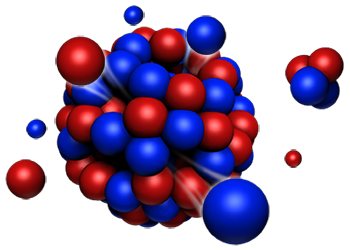Speaker
Description
The last decade has witnessed the development of several alternative neutron detector technologies, as a consequence of the world-wide shortage of $^3$He, as well as the upcoming research facilities and upgrades. These future facilities and upgrades set high requirements for these detectors, that could otherwise become the bottleneck of the instrument's scientific performance. It is therefore important to understand every aspect of detector performance before qualifying it for a particular neutron technique.
Monte Carlo simulations could and should play a key role in the development and characterisation of detectors as a reliable, cheap and versatile tool. Simulations not only make it easier to analyse and compare detectors and detector arrangements without building a physical prototype every time, but also enable the quantification of otherwise unmeasurable properties.
This work focuses on a promising candidate for $^3$He-substitute technology, a solid $^{10}$B-enriched boron-carbide converter based, Ar/CO2-filled neutron detector, the Boron Coated Straws (BCS) by Proportional Technologies Inc. [1]. This detector is a commercial solution designed for use in homeland security and neutron science. In order to evaluate its performance for scientific application, a generic BCS detector model is implemented for Geant4 [2] simulations. With this, a complex analysis is carried out, investigating various aspects, like conversion and detection efficiency, absorption, activation and the impact of scattering on the measured signal. The parameter space of the study includes the material composition of the detectors, the number of overlapping detector layers (panels), and the incident neutron wavelength.
The results of this study are produced in the context of most realistic applications that might be envisaged, e.g., Small Angle Neutron Scattering (SANS) and direct chopper spectrometry. The aim is to have a complete set of generally applicable results.
$\textbf{References}$
[1] https://proportionaltech.myshopify.com
[2] http://geant4.cern.ch/

